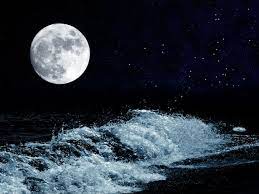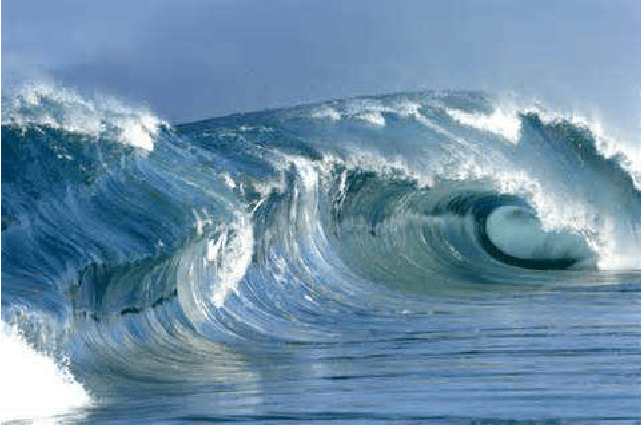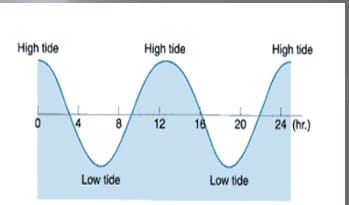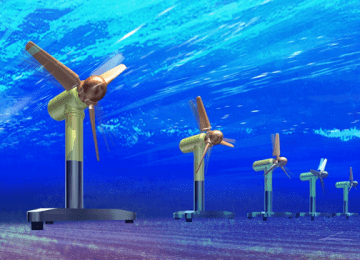Tidal Energy
Tidal energy is a form of renewable energy that converts the kinetic energy of tidal action in the oceans into electric power. All flowing water carries kinetic energy, and when this water encounters a turbine, part of its momentum is transferred onto the turbine, causing it to rotate. This rotation can then be used to generate electricity. Whether the water is in the open ocean, an estuary, or a river, its motion can be utilized to generate energy. The tides that occur in the oceans are one such source of energy based on the movement of water.

Tides
Tides are generated by the gravitational forces of the sun and moon on the ocean, by spinning of the earth around its axis and the relative positions of sun moon and the sun. Tides are the priodic vertical rise and fall of ocean water.
Types of Tides
There are two main types of tides
- High Tides
- Low Tides
High Tides
High tides are the result of the water level rising to its highest point during the tidal cycle. They are mainly influenced by the gravitational pull of the moon and the sun. When the Earth, moon, and sun are correctly aligned, it can lead to higher-than-usual tides, called spring tides. These usually occur during the phases of the new moon and full moon.. High tides can have various impacts, such as causing coastal flooding or creating the perfect conditions for activities like surfing or beachcombing. Observing the incredible power and beauty of the ocean during high tides is always a fascinating experience.

Low Tides
Low tide is when the water level is at its lowest point during the tidal cycle and the opposite of high tide. During low tide, more parts of the beach become exposed as the water recedes farther away from the coastline. This exposes tide pools, sandbars and allows for beachcombing, making it an excellent opportunity for exploring coastal caves or walking along the shoreline.
Difference between Tide and Wave
Waves and tides are two different phenomena. waves are movements of the water’s surface created by wind, while tides are the periodic changes in the water level along the coastline caused by the gravitational pull of the moon and the sun.
Waves
Waves are the up and down movements of the water’s surface caused by wind blowing across the ocean. They can vary in size and strength and are commonly observed at the beach. Depending on the weather conditions, waves can range from small and gentle to big and powerful.

Tides
Tides refer to the rising and falling of seawater levels along the coastline. The gravitational pull of the moon and the sun primarily causes them. They follow a predictable pattern and occur twice a day. Tides can affect the depth of the water and can be high or low, depending on the position of the moon and the sun.

Daily Tidal Cycle
The daily tidal cycle is the regular pattern of ocean tides that occur throughout the day, influenced by the gravitational pull of the moon and the sun on Earth’s oceans. Typically, there are two high tides and two low tides in a 24-hour period, with roughly 6 hours and 12 minutes between each high tide and low tide. This means that the tides go through a complete cycle approximately every 12 hours and 25 minutes. During high tide, the water level rises, and during low tide, the water level recedes. However, the timing and height of the tides can vary based on factors like the moon’s phase and the geography of the coastline.

The daily tidal cycle is caused by the gravitational pull of the moon and the sun. It creates high and low tides throughout the day.
Tidal Power Energy System
Tidal power generation systems work by utilizing the energy from the natural movement of the tides to produce electricity. There are various types of tidal power systems available which are given below:
- Tidal stream systems
- Tidal barrage system
Tidal Stream Systems
In a tidal stream system, turbines are placed under water in areas with strong tidal currents, such as narrow channels or straits. These turbines are similar to wind turbines, but they use the flow of water instead of wind to rotate their blades. As the tides ebb and flow, the turbines spin, and this mechanical energy is converted into electrical energy by generators.
The electricity generated by the turbines is then transmitted through underwater cables to the shore, where homes, businesses, and communities can access and utilize it.

Tidal barrage system
The tidal barrage system is a type of power generation system that makes use of the kinetic energy of the tides. This system involves building a dam-like structure called a barrage, which has openings or gates that allow water to flow in and out during the changing tides.
When the tide rises, water flows into the basin behind the barrage through the openings. This water then passes through turbines, which are similar to big underwater fans, and as they spin, they generate electricity. When the tide goes out, the water flows back through the turbines, generating more electricity.

The main concept behind this system is that the difference in water levels between high tide and low tide creates a significant amount of potential energy. The tidal barrage system harnesses this energy to generate clean and renewable electricity.
Overall, it’s an interesting and eco-friendly way to make use of the power of the tides and contribute to sustainable energy generation.
Dynamic tidal power system
The concept of dynamic tidal power involves building a wall or barrier perpendicular to the coastline to capture the energy generated by the tides. As the tides flow around the barrier, the difference in height creates a pressure difference that can be harnessed to produce electricity. This system is designed to efficiently and sustainably utilize the energy from tidal currents, making it an innovative approach with the potential to generate significant amounts of clean and renewable energy. However, it’s important to note that dynamic tidal power is still in the conceptual stage. More research and development are necessary to determine its feasibility and environmental impact. Nonetheless, it’s exciting to see advancements in tidal power technology and the potential it holds for a greener future.
Advantages of Tidal Energy
- Renewable Energy Source
- High Energy Density
- Inexpensive to maintain
- Environmental Friendly
- No Green House Gases
- Tides are easily predictable
- No Fuel Required
- Long life of power plant
Limitations
- Initial construction cost is high
- Variability in output due variation in range
- Machinery get corroded due to sea water
- Construction in sea is difficult
- Energy produces only 10 hours of a day
- Few suitable tidal power sites
- Marine life affected